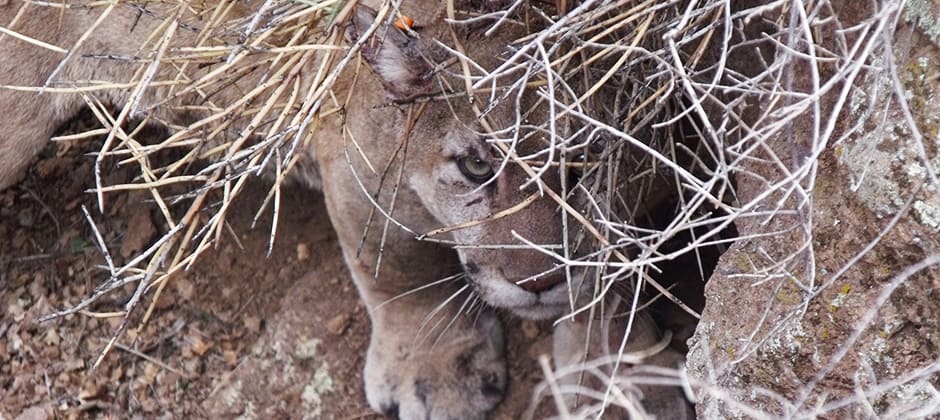Share this article
In California, two tales of mountain lions emerge
California likely has more landscape suitable for mountain lions than any other state, researchers recently found, but half of it consists of unprotected lands vulnerable to development.
The findings are part of an extensive study conducted in preparation for a statewide management and conservation plan for the species.
A cooperative effort involving a dozen authors from state, tribal, academic and nonprofit organizations, the paper published in the Journal of Wildlife Management paints two different pictures of mountain lion (Puma concolor) habitat throughout California. Some spots where they roam are small and fragmented, hosting tiny, inbred populations. Others are large, supporting healthy populations that can negatively affect endangered populations of bighorn sheep (Ovis canadensis) and other imperiled species.
“In some areas of the state, mountain lions are in trouble. In other parts of the state, quite frankly, they’re the problem,” said Justin Dellinger, statewide large carnivore researcher for the California Department of Fish and Wildlife, the lead author on the study. “It’s a tricky situation, but as a public trust, it’s up to us to detail to the public what the plans are, what the issues are and how we’re going to go about addressing them.”
As state wildlife officials set out to draft a plan to manage the species, researchers sought to determine how much mountain lion habitat existed in the state and how the cats used it. Gathering 18 years’ worth of location data from 263 collared animals, they looked at two different scales. First, they took a wide lens look to see how the animals selected their home ranges. Then, they took a narrower peek to see how individuals used the landscape.
At the home range scale, they found mountain lions selected areas to prioritize finding prey — particularly mule deer (Odocoileus hemionus) and black‐tailed deer (O. h. columbianus). Within those ranges, though, they found mountain lions sought out areas where they could avoid humans.
Researchers tallied up to 170,085 square kilometers of California landscape suitable for mountain lions, depending on the season — likely more than any other state, although they found half was on unprotected lands, raising concerns about how future development could impact the species.
“Although we do have a lot of habitat, that doesn’t necessarily mean that we’re good across the state,” Dellinger said. “You’ve got to delve in on the ground level to better understand exactly what is going on.”
The paper is one of a handful expected to result from the statewide research effort. Others look at habitat suitability and genetic viability, landscape connectivity and population estimation for long-term monitoring.
Researchers hope the work will help managers identify key landscapes that should be preserved to maintain connectivity and gene flow while also grappling with depredation issues. The findings may also benefit other species, Dellinger said.
“It’s not all for mountain lions,” he said. “It’s using mountain lions as a quintessential umbrella species. If you can maintain habitat for this wide-ranging species, chances are other animals will benefit from it.”
Header Image: In some areas of California, mountain lion populations are threatened. In others, they’re stable and threatening other species. ©Justin Dellinger








